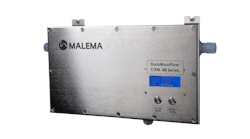ABSOLUTE ZERO: The temperature at which thermal energy is minimum. Defined as zero kelvin; calculated to be -273.15 C or -459.67 F.
ALPHA: Used to indicate correlation between resistance and temperature change. Typical values for platinum are .00385055 (DIN Standard), .003902 (American Standard), and .00392 (Department of Defense Standard).
AMBIENT: The mean temperature of the air surrounding the instruments under test.
CALIBRATION: The testing of a thermocouple to determine its EMF
(electromotive force) properties.
COLD JUNCTION: Related to thermocouples, also known as the Reference Junction.
CORE ROD: Alternate name for the thermocouple or other wire that sits inside the metal sheath and mineral insulation.
DRAW: Thermocouple cable is drawn through progressive dies/size reductions to achieve the smaller, more compact end result required.
EMF: Electromotive force is related to the potential force or millivolt
output of a thermocouple, the size of which is determined by the pair
of dissimilar metals used in the thermocouple and temperature.
FERRULE: A tubular fitting that is compressed onto a probe inside a compression fitting that is compressed onto the probe itself.
FREEZING POINT: The fixed temperature point of a material that occurs during the transition from a liquid to a solid state. This is also known as the melting point for pure materials.
GAP MEASUREMENT: A term for our capacitive measuring system for high temperature measurement of gaps in turbines and other rotating equipment.
KN LEG: The negative leg of a type K thermocouple. Mainly nickel with small added amounts of aluminum, manganese, and silicon. Company trade names are Alumel, Nial, and HAI-KN.
KP LEG: The positive leg of a type K thermocouple. Mainly nickel with added chromium. Company trade names are chromel, Tophel, and HAI-KP.
PRIMARY STANDARD: A term that applies to an instrument that meets conditions required for establishing the International Practical Temperature Scale.
RTD: An abbreviation for resistance temperature detector. It is a circuit element whose resistance increases with increasing temperature in a predictable manner. Platinum is the most popular material used in RTDs.
SHEATH: The external metal covering that protects the highly compacted powder insulant and the core rods form corrosion or mechanical damage. Main types are steels, Alloy 600, and others suitable for high temperatures.
The terms and definitions for this issue’s Word Search come from a glossary
of terms compiled by Tyco Thermal Controls (www.tycothermal.com), a global manufacturer of temperature measurement and control solutions.

